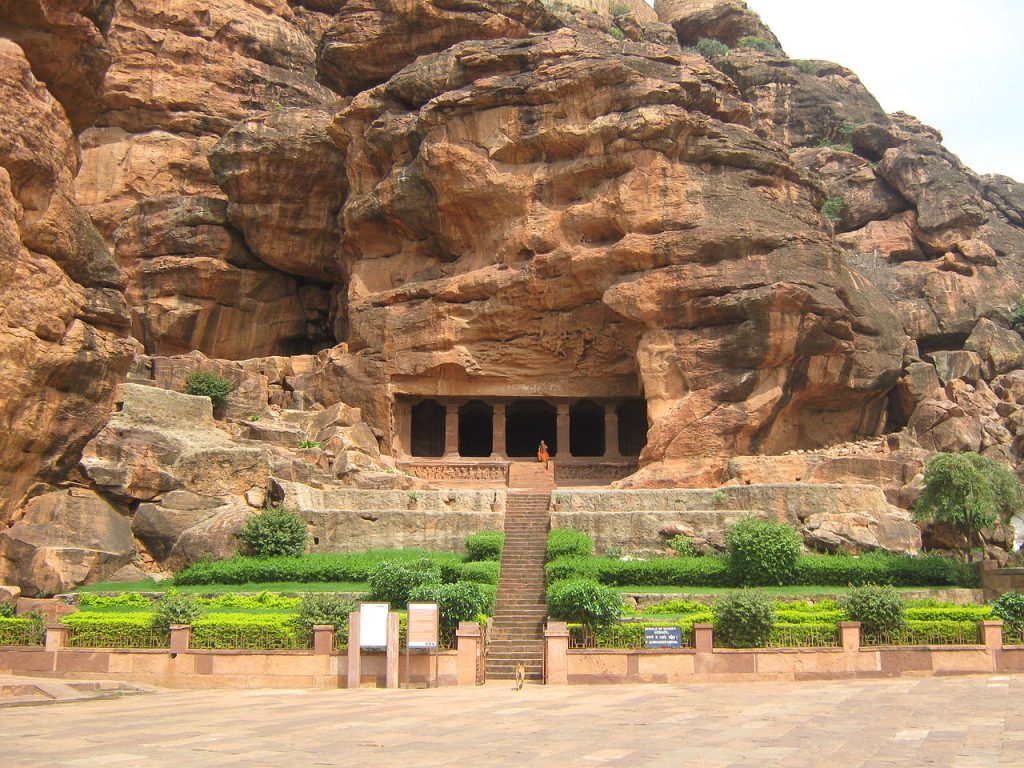In this week’s Time Travel column, Roopa Pai tells us about one of the most successful Kings in the history of India. Can’t wait to learn more? Come, take a trip to Badami with us.
Time Travel – 4
In the 6th century AD… Wait. Let’s do a quick refresher course here. AD stands for Anno Domini, or ‘the year of our Lord’, which is the year in which Jesus Christ was born. The centuries before this are suffixed with the letters BC, or ‘Before Christ’. We are now in 2011 AD, which means it is now 2011 years since the birth of Christ. When we say the 1st century AD, we mean the hundred years between 1 AD and 99 AD, so when we say 6th century AD, we are talking about the years 500 to 599 AD, and NOT about 600 to 699 AD. Clear? Let us proceed.
In the 6th century AD, a great shake-up was beginning in south India, with the decline of the powerful Gupta dynasty in the north. One of the powerful kingdoms that emerged in this period were the Chalukyas . In all, they ruled for about 600 years – 543 to 1189 AD – and as three different dynasties – the Chalukyas of Badami, the Chalukyas of Kalyani, and the Chalukyas of Vengi. The ones we are interested in today are the mighty Chalukyas of Badami.
Introducing The Chalukyas Of Badami

In 543 AD, a chieftain called Pulakesi I grabbed power in the northern Karnataka region. From his capital of Vatapi (today called Badami), a few kilometres away from the main course of the Malaprabha river, Pulakesi expanded his kingdom to the western coast, getting the Chalukyas access to the lucrative Arabian Sea trading routes.
But it was during the reign of his descendant, Pulakesi II (610-642 AD), one of the greatest kings in Indian history, and certainly the greatest king of the dynasty, that the Chalukyas really came into their own.
Pulakesi II (let’s call him P2 in the interests of saving space) had a stormy ascent to the throne – his dad Kirtivarman I had died when P2 was still a boy, so his uncle Mangalesha offered to rule the kingdom on his behalf until he was 18. Of course, by then, Mangalesha had begun to enjoy kingship too much, and wanted his son to become king instead of P2. P2 ran away to Kolar, got an army together, made short work of his uncle, and ascended the Vatapi throne as Chalukya Parameshwara.
Taking The Reins
Even after he became king, P2 had to fend off challenges from various cousins, who were very put out that they weren’t going to be kings after all. It was only after he had subdued them that he could turn his attention to expansion, but when he did, he did it with a will and a valour that had seldom been seen in these parts before.
In the west, he subjugated the Kadambas, the Gangas, and several others, bringing parts of Gujarat and the port of Puri (now Elephanta Island) under his control. In the east, he overran the kingdoms of Vengi (Andhra Pradesh), Kosala (in present-day Uttar Pradesh), and Kalinga (Orissa). Turning south, he routed the Pallava king, Mahendravarman I, and took his northern territories.
But his most famous battle was fought on the banks of the Narmada against Harshavardhana of Kanauj, the mighty Uttarapatheshwara (Lord of the North). P2 defeated Harsha, putting paid to his dreams of owning the Deccan and the south. A treaty was signed, designating the Narmada as the boundary between the two kingdoms, and P2 received the title Dakshinapatheshwara.
Thus was the first great south Indian empire established by Pulakesi II of the Badami Chalukyas. With peace established between the biggest northern and southern kingdoms, cultures began to mingle. Sanskrit made its way south, and many words became absorbed into Kannada. International visitors, like ambassadors from the Shah of Persia – were received at P2’s court, and Chinese traveller monk Hieun-Tsang wrote admiringly of him.
As an aside, P2 was also the first south Indian king to issue gold coinage. All the coins were stamped with a boar, or Varaha, the royal emblem of the Chalukyas.
Extra! Extra!

Visit! The Chalukyan temples at Badami, Aihole (the ‘cradle of ancient Hindu temple architecture’), and Pattadakal (a UNESCO World Heritage Site), on the banks of the Malaprabha.
Watch! The Kannada historical film Immadi Pulakeshi, on the life of Pulakesi II. Also the song ‘Ek Lo, Ek Muft’ from the 2007 Bollywood film Guru, which is shot at the cave temples of Badami.
Read! The works of the great trinity of Kannada poets – Pampa, Ranna and Ponna – all of whom were patronised by the Chalukyas
Nadi Notes
The Malaprabha river takes its birth in the Western Ghats, in the Belgaum taluk of Karnataka. From there, it flows some 300 kms east and north-east, and finally joins the Krishna at Kudalasangama in the neighbouring Bagalkot district. The Navilatirtha dam across the Malaprabha irrigates some 2000 sq kms of land and its reservoir, Renukasagar, is where Hubli draws its drinking water from.
Liked reading this? Then you might also like to read Time Travel: Telling The Tale Of Gangas On The Kaveri.
This set of weekly columns was published in the student edition of Deccan Herald during the school year 2011-12.
If there’s any story that needs to be told, we will tell it. Write to us at contact@knowyourstar.com with your story lead, or contact us on Facebook or Twitter.